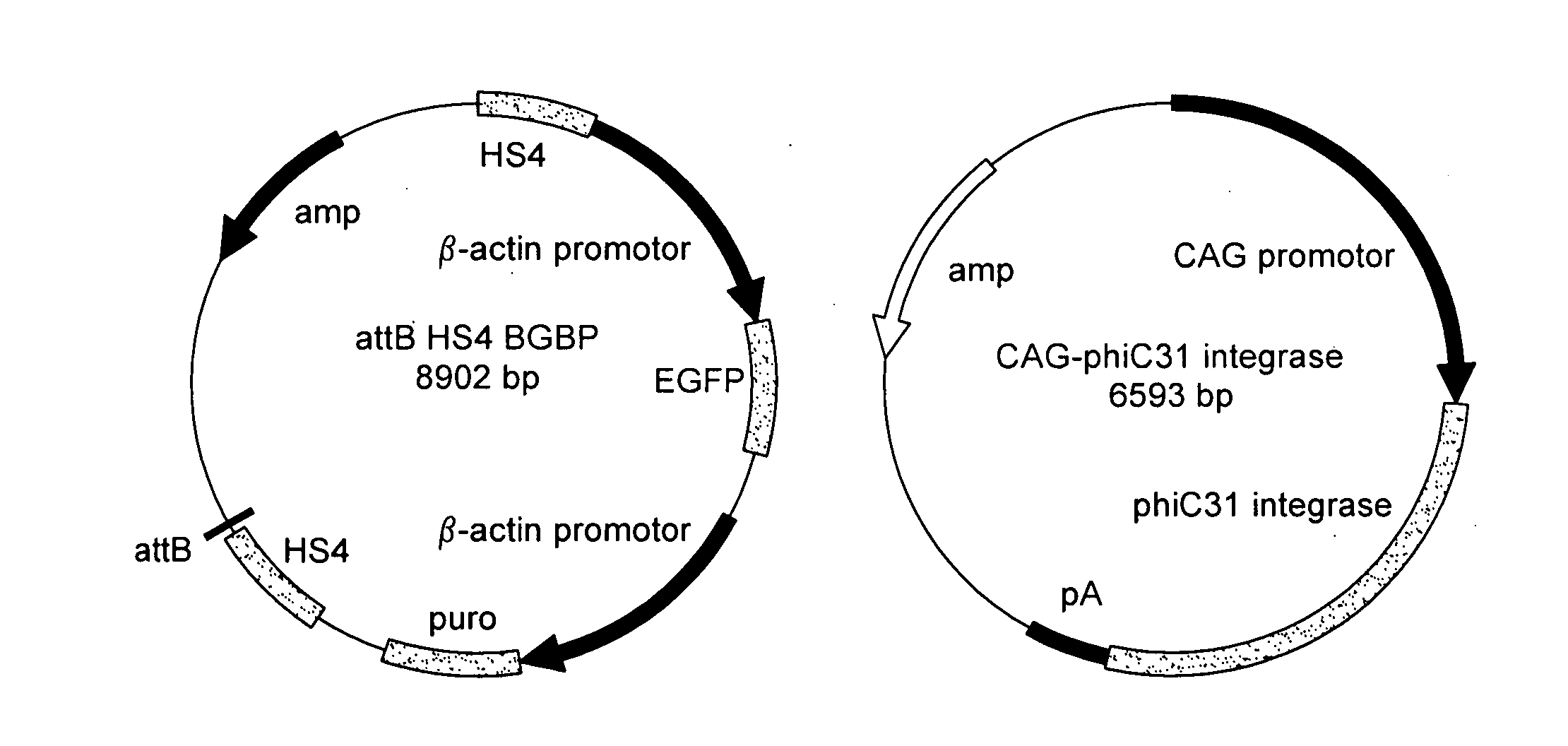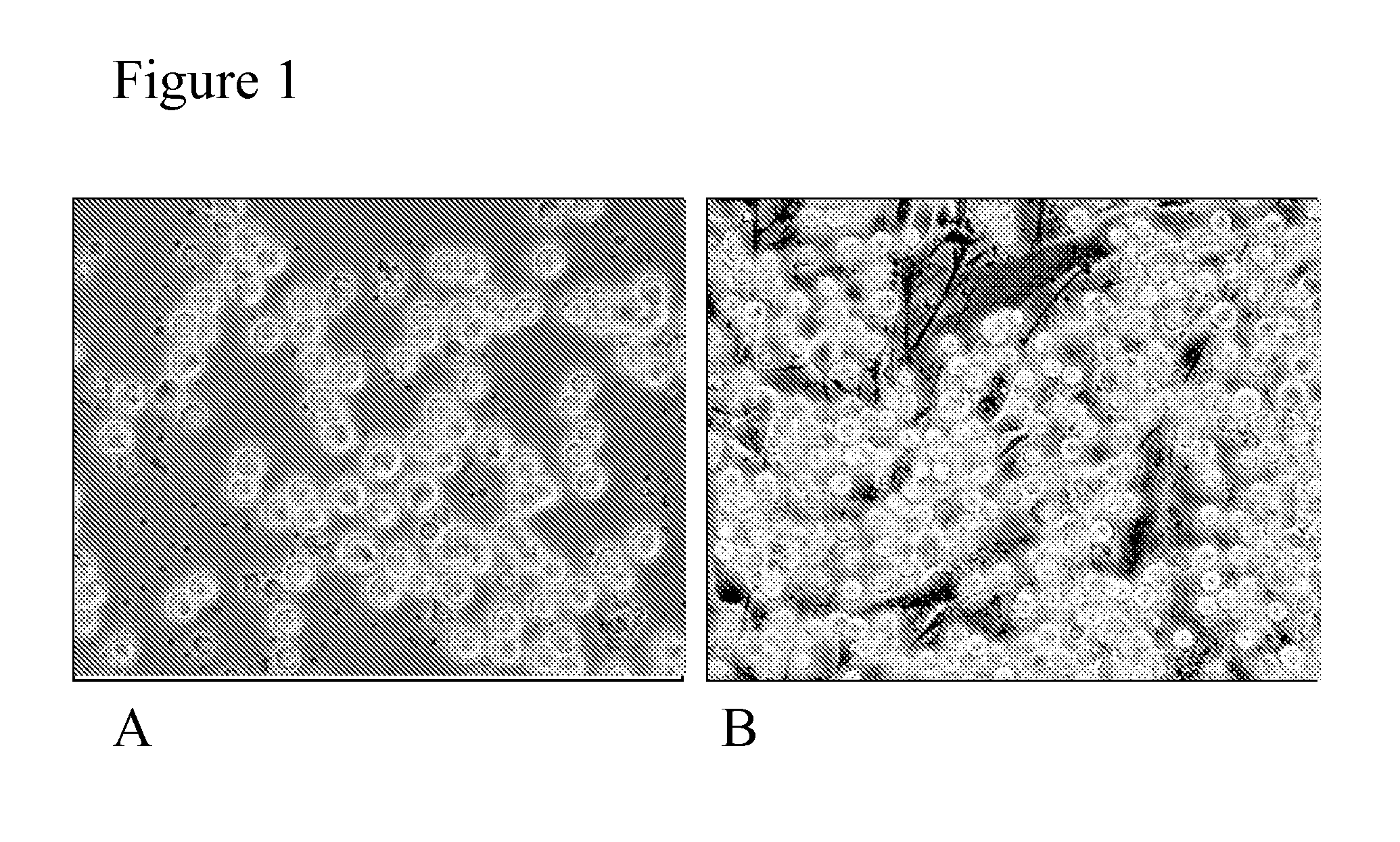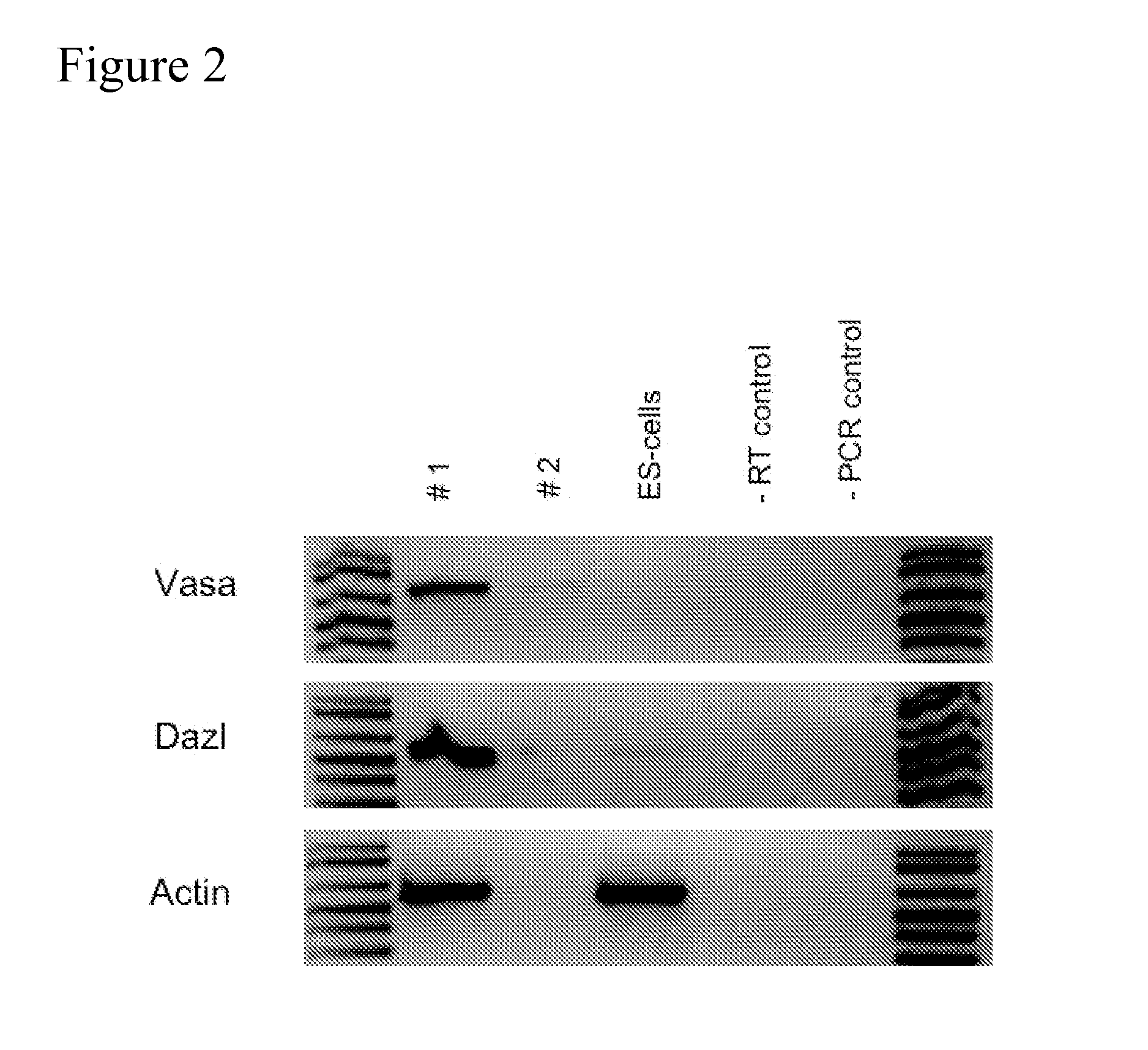Transgenic chickens with an inactivated endogenous gene locus
a technology of inactivated endogenous gene and chicken, which is applied in the field of transgenic chickens with inactivated endogenous gene locus, can solve the problems of limited size, transgenic chickens have not been created, and significant technical hurdles in the production of transgenic animals, so as to facilitate the expression of exogenous proteins, enhance the therapeutic utility, and improve the effect of therapeutic
- Summary
- Abstract
- Description
- Claims
- Application Information
AI Technical Summary
Benefits of technology
Problems solved by technology
Method used
Image
Examples
example 1
Derivation of Cultures of Chicken PGCs
[0085]Two to five μL of blood taken from the sinus terminalis of Stage 14-17 (H&H) embryos were incubated in 96 well plates in a medium containing Stem Cell Factor (SCF; 6 ng / ml or 60 ng / ml), human recombinant Fibroblast Growth Factor (hrFGF; 4 ng / ml or 40 ng / ml), 10% fetal bovine serum, and 80% KO-DMEM conditioned medium. Preferably one to three μL was taken from the vasculature of a stage 15-16 (H&H) embryo. The wells of the 96-well plates was seeded with irradiated STO cells at a concentration of 3×104 cells / cm2.
[0086]KO-DMEM conditioned media were prepared by growing BRL cells to confluency in DMEM supplemented with 10% fetal bovine serum, 1% pen / strep; 2 mM glutamine, 1 mM pyruvate, 1X nucleosides, 1X non-essential amino acids and 0.1 mM β-mercaptoethanol and containing 5% fetal bovine serum for three days. After 24 h, the medium was removed and a new batch of medium was conditioned for three days. This was repeated a third time and the thr...
example 2
Cultured PGCs Express CVH and Dazl
[0090]Expression of CVH, which is the chicken homologue of the germline specific gene VASA in Drosophila, is restricted to cells within the germline of chickens and is expressed by approximately 200 cells in the germinal crescent. (Tsunekawa, N., Naito, M., Sakai, Y., Nishida, T. & Noce, T. Isolation of chicken vasa homolog gene and tracing the origin of primordial germ cells. Development 127, 2741-50. (2000). CVH expression is required for proper function of the germline in males; loss of CVH function causes infertility in male mice. (Tanaka, S. S. et al. The mouse homolog of Drosophila Vasa is required for the development of male germ cells. Genes Dev 14, 841-53. (2000). The expression of Dazl is restricted to the germline in frogs (Houston, D. W. & King, M. L. A critical role for Xdazl, a germ plasm-localized RNA, in the differentiation of primordial germ cells in Xenopus. Development 127, 447-56, 2000), axolotl (Johnson, A. D., Bachvarova, R. F....
example 3
PGCs Express the CVH Protein
[0092]Protein was extracted from freshly isolated PGCs using the T-Per tissue protein extraction kit (Pierce). Protein from cells was extracted by lysing the cells in 1% NP4O; 0.4% deoxycholated 66 mM EDTA; 10 mM, Tris, pH7.4. Samples were run on 4-15% Tris-HCL ready gel (Bio-Rad). After transfer onto a membrane, Western blots were performed with Super Signal West Pico Chemiluminescent Substrate kits (Pierce) as instructed. A rabbit anti-CVH antibody was used as a primary antibody (1:300 dilution) and a HRP-conjugated goat anti-rabbit IgG antibody (Pierce, 1:100,000) was used as a secondary antibody (FIG. 3).
PUM
| Property | Measurement | Unit |
|---|---|---|
| doubling time | aaaaa | aaaaa |
| time | aaaaa | aaaaa |
| concentration | aaaaa | aaaaa |
Abstract
Description
Claims
Application Information
 Login to View More
Login to View More - R&D
- Intellectual Property
- Life Sciences
- Materials
- Tech Scout
- Unparalleled Data Quality
- Higher Quality Content
- 60% Fewer Hallucinations
Browse by: Latest US Patents, China's latest patents, Technical Efficacy Thesaurus, Application Domain, Technology Topic, Popular Technical Reports.
© 2025 PatSnap. All rights reserved.Legal|Privacy policy|Modern Slavery Act Transparency Statement|Sitemap|About US| Contact US: help@patsnap.com



